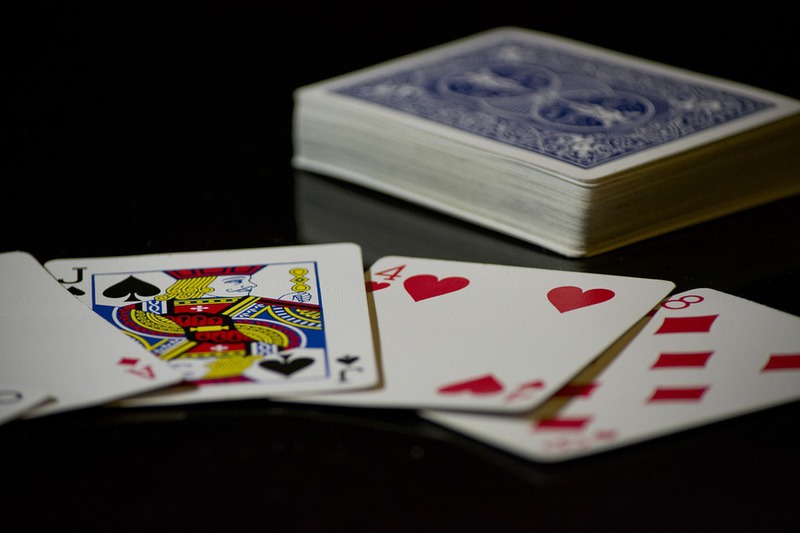






Sports Betting And Poker Moving In Opposite Directions In NevadaSports Betting Win Up 30 Percent, Poker Down 30 Percent Since 2007 |
|
|

Sports betting and poker have gone in opposite directions over the past several years in Nevada. The two gaming activities provided basically identical revenue ($168 million) for Silver State casinos in 2007, and poker was actually bigger in both 2008 and 2009.
But the end of the poker boom, exacerbated by online poker’s Black Friday in early 2011, and sports betting’s rapid growth have put the games on different paths.
These days, poker represents one percent of overall Nevada gaming revenue ($11.2 billion), while sports betting accounts for two percent. It’s just one percentage point, but it’s still a big deal.
Michael Lawton, Senior Research Analyst for the Nevada Gaming Control Board, told Card Player that poker and sports betting will likely “continue on very different trajectories for some time.”
What’s Happening With Sports Betting
There isn’t just one reason why Nevada’s sports wagering industry has seen “phenomenal” growth lately. A record $231.8 million was won from sports bets in 2015. The handle was a record $4.5 billion last year, though win dipped slightly.
 “On a macro level, the general health of the sports betting industry in Nevada has never been stronger,” Lawton said. “With ESPN mentioning point spreads and ‘bad beats’ on their prime time shows, national press stories on expanded Super Bowl propositions along with the unique March Madness experience in Las Vegas, the state continues to see more regional and national tourists seeking out the sports book when they visit properties.”
“On a macro level, the general health of the sports betting industry in Nevada has never been stronger,” Lawton said. “With ESPN mentioning point spreads and ‘bad beats’ on their prime time shows, national press stories on expanded Super Bowl propositions along with the unique March Madness experience in Las Vegas, the state continues to see more regional and national tourists seeking out the sports book when they visit properties.”
A 1992 federal law limits traditional sports betting to just the state of Nevada. There are efforts underway on Capitol Hill to change that and allow all 40 states with casinos to have sports books. Sports betting was basically recession proof, too, with the amount bet remaining flat between 2007 and 2009 ($2.6 billion). Overall Nevada gaming win fell sharply during the period.
According to Lawton, on a micro level operators have been fast to offer wagers on a wider variety of events, including “in play” wagering. He said that being able to bet electronically on a game during the game is the “perfect product” for a population obsessed with mobile devices.
“The bottom line is that a computer savvy public along with a sports passionate culture have embraced sports wagering on their personal devices, which has been a key contributor to the $1.7 billion, or 63.2 percent increase, in sports betting volume the state has recorded since 2010.”
Future for Nevada Poker
Nevada’s poker market reached a high of $167.9 million in 2007. That was an incredible feat because just four years earlier poker revenue was $68.3 million. The TV coverage of Chris Moneymaker’s dramatic victory in the 2003 main event played a big role.
However, the market has decreased by about $50 million (29.9 percent) since 2007. Poker revenue was under $118 million in 2016, the lowest since 2004.
“Another eye opening data point,” according to Lawton, is the fact that in January 2007 there were 102 poker rooms offering 881 tables statewide. In December 2016, there were only 65 locations offering 602 tables statewide.
 In other words, Nevada has lost 37 poker rooms and 279 tables from poker’s peak. The Strip lost Monte Carlo’s eight-table room just last month. Nevada launched online poker in 2013, but with a lack of liquidity those games haven’t been as successful as originally anticipated. The Nevada online poker market is worth about $7 million a year.
In other words, Nevada has lost 37 poker rooms and 279 tables from poker’s peak. The Strip lost Monte Carlo’s eight-table room just last month. Nevada launched online poker in 2013, but with a lack of liquidity those games haven’t been as successful as originally anticipated. The Nevada online poker market is worth about $7 million a year.
“It is our understanding that there will be continued decreases in locations providing poker and in the number of tables offered for play,” Lawton said. “The reason for the continued downsizing is the result of poker providing very little flow through to the bottom line due to an aggressive promotional environment. Operators feel that poker has lost some of its appeal to the younger demographic as it is not as visible on TV as it was several years ago.”
The silver lining is that while the poker supply is shrinking, the market has remained stable at about $120 million since 2012. That’s double the market size in 2002 before the poker boom. In other words, the poker boom had lasting positive effects.
Since the high point of the poker boom, some states across the country have allowed table games at their respective casinos. Poker is widely available in America. Pennsylvania’s poker market, for example, is about $60 million a year and didn’t begin until about 10 years ago. Some of that money could have gone to Nevada poker rooms. In Maryland, the poker market is now close to $4 million a month, with January and February seeing 30 percent year-over-year gains. Maryland didn’t allow live dealer games until 2013.
“The proliferation of casinos across the United States has decreased the need for players to travel to Nevada to play poker,” Lawton said. “At this point the consensus is that traditional poker will not experience any significant growth without a national interactive component to support growth in traditional poker by introducing new players to the game.”
